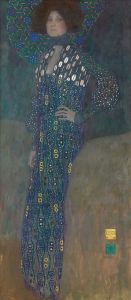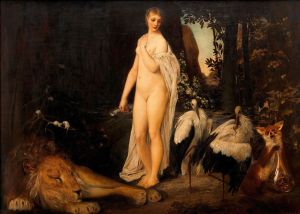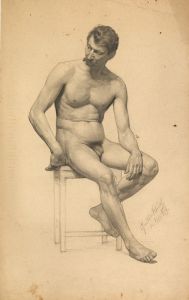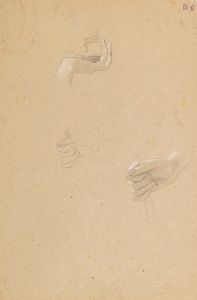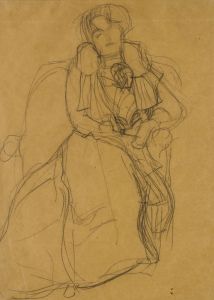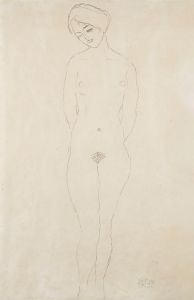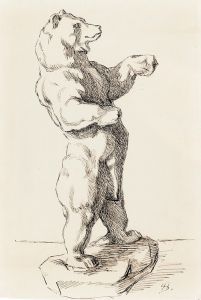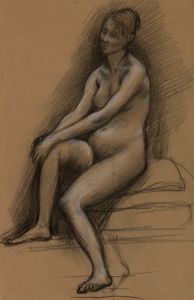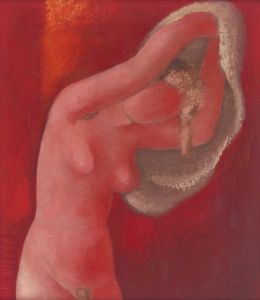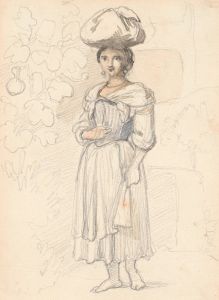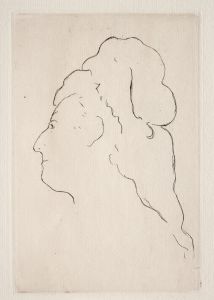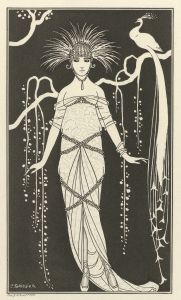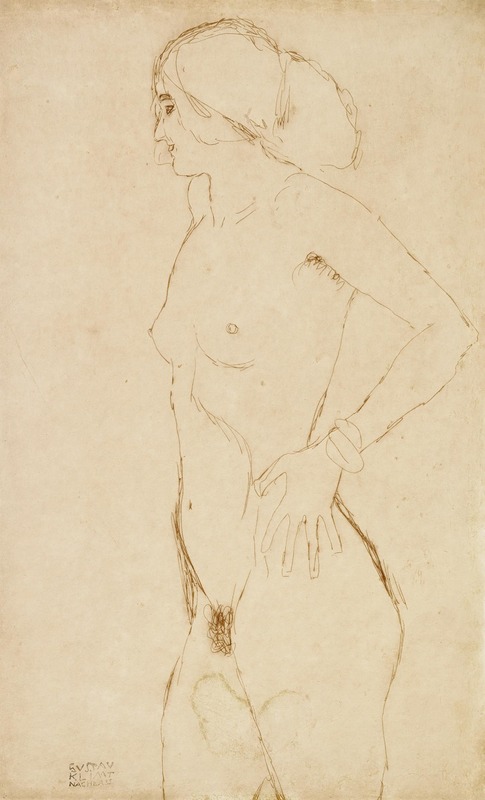
Standing nude girl, facing left
A hand-painted replica of Gustav Klimt’s masterpiece Standing nude girl, facing left, meticulously crafted by professional artists to capture the true essence of the original. Each piece is created with museum-quality canvas and rare mineral pigments, carefully painted by experienced artists with delicate brushstrokes and rich, layered colors to perfectly recreate the texture of the original artwork. Unlike machine-printed reproductions, this hand-painted version brings the painting to life, infused with the artist’s emotions and skill in every stroke. Whether for personal collection or home decoration, it instantly elevates the artistic atmosphere of any space.
Gustav Klimt, an Austrian symbolist painter, is renowned for his distinctive style that combines symbolism, eroticism, and a unique use of color and form. One of his lesser-known works, "Standing Nude Girl, Facing Left," is a drawing that exemplifies his skill in capturing the human form with minimalistic yet expressive lines. This piece is part of Klimt's extensive collection of drawings, which often served as studies for his larger paintings or as standalone works of art.
"Standing Nude Girl, Facing Left" is a pencil drawing that showcases Klimt's ability to convey the essence of his subjects with simplicity and elegance. The drawing features a young woman standing with her body slightly turned to the left, her gaze directed downward. The lines are fluid and graceful, capturing the natural curves of the female form. Klimt's focus on the nude figure reflects his interest in exploring themes of beauty, sensuality, and the human condition.
Klimt's drawings, including "Standing Nude Girl, Facing Left," were often created during the late 19th and early 20th centuries, a period when he was actively involved in the Vienna Secession movement. This movement sought to break away from traditional academic art and embrace more modern, innovative approaches. Klimt, as one of the founding members, played a crucial role in shaping the direction of the movement, which emphasized artistic freedom and the integration of art into everyday life.
The drawing is characteristic of Klimt's approach to the female form, which often involved a delicate balance between realism and abstraction. While the figure is rendered with a degree of anatomical accuracy, Klimt's use of line and form imbues the drawing with a sense of ethereal beauty. This approach is consistent with his broader body of work, where he frequently depicted women as central figures, exploring their roles and representations in society.
Klimt's work, including his drawings, was sometimes met with controversy due to its erotic nature. However, his ability to capture the complexity and allure of the human form has earned him a lasting legacy in the art world. His drawings are celebrated for their technical precision and emotional depth, offering insight into his creative process and artistic vision.
"Standing Nude Girl, Facing Left" is a testament to Klimt's mastery of drawing and his ongoing fascination with the female form. While it may not be as widely recognized as his paintings, such as "The Kiss" or "Portrait of Adele Bloch-Bauer I," this drawing remains an important part of his oeuvre. It reflects his commitment to exploring new artistic possibilities and his enduring influence on modern art.
In summary, "Standing Nude Girl, Facing Left" by Gustav Klimt is a compelling example of his drawing technique and thematic interests. It highlights his skill in depicting the human form with elegance and simplicity, contributing to his reputation as one of the leading figures of the Vienna Secession and a pivotal artist in the transition to modern art.






